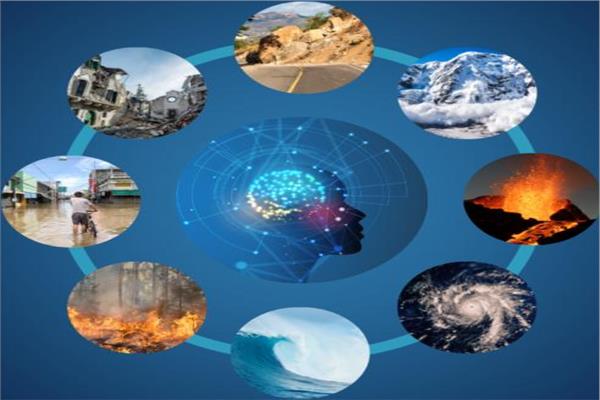Disasters caused by natural hazards are increasing in frequency and intensity, reflecting the immediate reality of climate change and leading to an increasing succession of humanitarian crises.
A report published by the International Telecommunication Union indicated that new technologies can help detect and prepare for severe weather and other hazards, as well as communicate effectively with people and communities about the necessary response.
“We are all exposed to natural hazards, and this will only get worse in the future,” Jürg Luterbacher, director of science and innovation at the World Meteorological Organization (WMO), said at a recent webinar. “We need to act on it accordingly.”
The World Meteorological Organization (WMO), along with the International Telecommunication Union (ITU) and the United Nations Environment Program (UNEP), set out to explore the potential of artificial intelligence (AI) to enhance disaster mitigation around the world, and formed the three United Nations agencies last year. The Specialized Expert Group on Artificial Intelligence for Natural Disaster Management to support global efforts to integrate AI into disaster management systems.
Recent decades have made advances in natural hazard and disaster modeling, resulting in better tools for responding to extreme weather events. One frequently cited case is Cyclone Phailin in eastern India in 2013, when an accurate digital model routing prevented a tragedy of the kind that followed a similar storm 15 years earlier.
And there is still much room for improvement, as according to WMO’s State of Climate Services 2020 report, one in three people in the world is not adequately covered by an early warning system.
Meanwhile, climate and weather disruptions have created risks to more parts of the planet, including regions that were not much affected by extreme natural phenomena until recently, as the UN Office for Disaster Risk Reduction noted at last year’s UN Climate Change Conference (COP26) in Glasgow, United Kingdom.
AI can help response teams understand natural hazards, monitor events in real time, and anticipate specific risks in the face of imminent or ongoing disasters.
“The more prepared we have early warning, the less human tragedy,” said Murali Thumarukudi, Director of Operations in the Crisis Management Branch of the United Nations Environment Program (UNEP), and while satellites and other existing meteorological infrastructures provide valuable information for weather forecasting, intelligence can Artificial that takes the process even further. Impact system modeling can, for example, indicate the potential consequences of natural hazards on populations and ecosystems.
“To get value for people, we need to understand not only what the weather will do, but what the weather will do to people and the environment,” said Anthony Rey, Director of WMO’s Infrastructure Department. I think AI can play a big role.”
Interoperable and cross-border solutions
The impact of extreme natural events is also determined by social and economic resilience, with inequality exacerbating risks and vulnerabilities, with experts emphasizing the need to explore interoperable solutions that can operate in different contexts and even across borders to reach areas with disaster infrastructure. least developed.
Several case studies show the value of AI during the different phases of disaster management: first, forecasting and forecasting; Next, to help communicate what happened; In monitoring and early detection of potential new risks.
A team from Vrije University in Amsterdam, in the Netherlands, examined various statistical models, using data from coastal regions around the world, in an attempt to predict flood and storm surge risks through deep learning methods in the face of rising sea levels caused by climate change. Open data can provide valuable insights into a type of ecosystem that is increasingly vulnerable.
Read also the first Egyptian and Arab to win the position of Chairman of the Third Study Committee of the International Telecommunication Union
